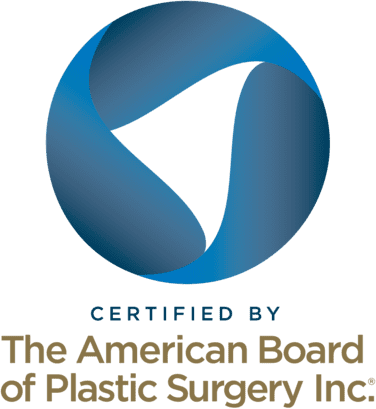What is Facial Feminization Surgery (FFS): Understanding the Procedure and Recovery Process
Facial Feminization Surgery (FFS) Basics:
Facial Feminization Surgery (FFS) is a class of gender-affirming surgical procedures people can elect to pursue to reconstruct the facial features of their choosing, with this procedure resulting in a softer and more conventionally feminine appearance. FFS surgery options can include rhinoplasty (nose reshaping), brow and eyelid lift, forehead contouring, chin and jawline reshaping, and tracheal shave (Adam’s Apple reduction). Facial fillers may also be part of one’s journey for gender-affirming care; currently Gender Confirmation Center (GCC) does not offer fillers. For a more comprehensive list of procedures, visit this page.
What Will Happen If I Get Facial Feminization Surgery (FFS)?
The process and results of FFS are just as unique as the individual receiving them. Some procedures are more complex or surgically extensive than others. Your healing time may vary as FFS surgeries require a combination of multiple procedures. Your specific care plan will be determined by you and your surgical team. Likewise, depending on the number of procedures that you undergo and your medical history, you may spend the night in the hospital instead of being discharged after your surgery. For a more specific timeline of options and recovery, you can request a free consultation.
FFS has a very high satisfaction rate for qualified patients. Feeling greater gender alignment with one’s facial features can help improve overall mental health and quality of life.
FFS Surgery: How to Get Started and Make Sure You Qualify
The first step in any surgical journey is scheduling a consultation with a board-certified surgeon. At the GCC, your FFS will be performed by either Dr. Alexander Facque (he/him) or Dr. Zara Ley (she/they), who are board-certified surgeons with specialties in craniofacial surgery and gender-affirming techniques. Their commitment to putting their patients’ goals and preferences first instead of imposing their own vision of what a patient’s FFS should look like has led to consistent satisfaction with long-term results.
When it comes time for your consultation, it might be helpful if you bring pictures that resemble your desired results (e.g., family photos). This is your time to come with any questions you may have about surgery and recovery. The GCC is here to support patients in all stages of their gender affirmation journey, so no question is too small. You will be photographed at in-person consultations as part of the pre-surgical planning. So, we ask you not to wear makeup for your consultations.
The next step after a consultation may require X-rays, CT scans, medical tests and/or a physical examination. These tests are to ensure the patient qualifies for the different elements of their elected procedures.
How Is Facial Feminization Surgery (FFS) Performed?
At the GCC, our surgeons categorize gender-affirming facial surgeries into three sections: the upper third, middle third, and lower third of the face. Your surgeon will determine whether your goals can be accomplished in one surgery or if multiple, staged surgeries will be needed.
The Upper Third includes:
- Hairline advancement/hairline lowering: an incision is made on the forehead along the hairline to bring the skin forward, creating a lower hairline.
- Brow lift: The skin of the eyebrows is brought upward so that the brow sits above the brow bone.
- Brow bone reduction/Forehead feminization or Brow bone augmentation. An incision is made along or behind the hairline to flatten or augment the brow bone/ridge. Forehead surgery may also include a procedure called Frontal Sinus Setback to flatten the bone located just between the eyebrows.
The Middle Third Includes:
- Cheek augmentation: Surgically lifting or adding volume to cheeks by fat grafting or with silicone implants.
- Rhinoplasty More commonly known as a “nose job,” this surgery involves reshaping the nose bridge, tip or nostrils.
The Bottom Third Includes:
- Lip lift & augmentation: is a procedure that shortens the space between the lip and nose or augments the overall volume of the lips with a fat transfer.
- Jaw contouring: Surgically reshaping the appearance of the jaw, reducing the bone.
- Genioplasty/chin reduction: Reshaping the chin.
- Buccal fat removal: involves removing fat from the lower cheeks so that the cheekbones appear more prominent
- Neck lift: a skin tightening procedure that pulls the neck skin tighter
- Tracheal shave: involves the reduction of the Adam’s apple
Are You A Candidate For FFS Medical Surgery?
The Gender Confirmation Center uses informed consent when determining surgical eligibility. In most situations, a letter from a mental health professional is not required. However, if the patient wants their insurance to cover the surgery, your insurance carrier may request a letter or more information to determine coverage.
Our insurance advocacy team is dedicated to helping patients with the insurance process. This service is completely free. The team has a 90% success rate for getting coverage for gender-affirming surgery.
Visit this page for more information about insurance eligibility and coverage.
Ultimately, your surgeon will consider the aspects of your unique situation to determine if you qualify for surgery. Generally, those who qualify are:
- Age 18 years or older.
- Are clear of health conditions that can make the patient high risk if undergoing surgery, including bleeding disorders, lung or heart disease, uncontrolled diabetes, and more.
Facial Feminization Surgery May Not Be Right for You IF:
- If you have unrealistic or unclear expectations of desired results.
- Are a heavy smoker, drinker, or drug user.
- Have a history of facial trauma.
The physical eligibility for FFS is not the only determining factor. It’s important to reflect on your motivations and expectations for this type of gender-affirming care. Talking with a therapist or mental health professional may be beneficial when deciding if facial feminization surgery is right for you.
Preparation and Procedural Details
For a comprehensive overview of preparation and recovery for surgery, please review this list of pre-operative measures patients scheduled for FFS commonly follow before surgery.
Medical Clearance & Insurance
- Eight weeks before surgery, the medical team will review the medical clearance requirements, such as blood work or other testing if applicable (results are due 2 weeks pre-operative)
- Obtain Insurance Approval (if applicable)
Body & Hair
- Do not get laser hair removal or electrolysis on the face or neck within 6 weeks of surgery.
- For patients having surgery done to the forehead or brows, do not get your eyebrows shaped before surgery, as this may interfere with post-op results.
- Avoid coloring hair 5 days before the procedure.
- Do not get any dental work done a week before the procedure (including teeth cleaning).
Medications & Substances
- Do not take medications containing aspirin or ibuprofen 2 weeks before surgery. This is to prevent bleeding problems during the procedure.
- Refrain from alcohol 7 days before and after surgery.
- Refrain from smoking and consuming nicotine products 4 weeks pre- and post-operation.
- If on hormones (estrogen and/or progesterone), you may be asked to pause your regimen 2 weeks before surgery.
- A week before your procedure, limit your Vitamin E intake to less than 400 mg daily.
- Post-operative medications will typically be prescribed 1-2 weeks before surgery.
The preparation regimen you follow may vary depending on health, lifestyle, and the advice from your care team.
The Benefits and Risks of Facial Feminization Surgery (FFS)
Choosing FFS surgery can be a positive step in one’s identity journey. Aligning a patient’s desired facial features can help alleviate feelings of gender dysphoria.
Studies have shown a correlation between facial feminization surgery and improved mental health outcomes. Both research and our direct work with patients demonstrate that surgical gender affirmation can help ease anxiety and give way to newfound confidence.. When it comes to making big changes like FFS, it’s crucial to consider the positive outcome of results and potential side effects.
Like any surgery, facial feminization surgery comes with risks. These risks may include but are not limited to:
- Infection
- Bleeding and blood clots
- Cardiopulmonary complications with anesthesia or different medication reactions
- Nerve injuries or sensation loss
- Unfavorable scaring
The Recovery Timeline for Facial Feminization Surgery (FFS)
FFS recovery time depends on the individual, the number and complexity of procedures, and any complications that may arise. It is important to note that patients wanting several procedures may need to undergo multiple stages of surgery.
Have a family member or friend assist you during the first two weeks of recovery so you can focus on resting. It’s recommended to wait 1-2 weeks before returning to work, provided the job is not physically demanding. Avoid lifting 10 pounds or more for the first six weeks after surgery.
If you normally wear glasses, switch to contact lenses if a rhinoplasty was done, as you will not be able to put pressure on your nose bridge for the first 6 weeks after surgery. Sleeping at an incline, with your head elevated, during the first few weeks after surgery is strongly recommended to help manage swelling.
During the first few weeks, resting is key for the recovery process, but it is also important to take brief, light walks to reduce the risk of blood clots. Before surgery, discuss with your surgeon the best practices for post-op activities.
Frequently Asked Questions About Facial Feminization Surgery (FFS):
Will Insurance cover Facial Feminization Surgery (FFS) costs?
Yes, many insurance providers with gender benefits cover FFS as a medically necessary procedure when qualified patients can provide necessary documentation. The GCC has an insurance advocacy team that can offer you free guidance with the approval process; we have a 90% success rate securing insurance coverage for interested patients.
Please note that there are non-surgical procedures used for FFS, like botox or hyaluronic acid injectable fillers, that are considered cosmetic and, therefore, are not covered by insurance.
How long does Facial Feminization Surgery (FFS) take?
Surgeries can run anywhere from 4 to 10 hours, depending on which procedures are done and if you are getting them done (in varied instances) within the same window of time.
Is there a medical surgery that ‘feminizes’ facial features the most?
FFS creates a softer, more conventional ‘feminine’ appearance. There is no one-size-fits-all surgery, as every patient has unique features. Talk with your doctor about which procedures you are interested in.
What is the recovery time for Facial Feminization Surgery (FFS)?
The recovery time between procedures varies depending on the patient, however, after the final surgery, patients can generally return to their normal lifestyle after 2-3 weeks post-op. Complete healing and final results may take up to 12 months to see.
Is Facial Feminization Surgery (FFS) permanent?
FFS is considered permanent, but further surgeries may be done to alter the results. Be sure to openly communicate with your doctor about your expectations and desired results from FFS. Please note that patients who undergo liposuction and fat transfer procedures may see their results change over time if they experience significant weight fluctuations.
Request a Free Surgical Consultation Today.
All virtual and in-person consultations with our board-certified surgeons are free. Once you fill out this form, our patient care team will reach out and guide you through every step to get to surgery.




